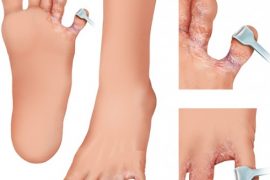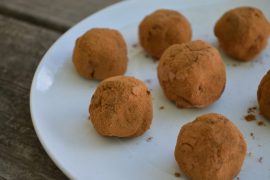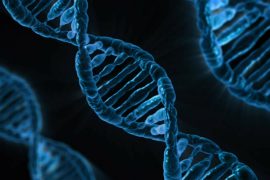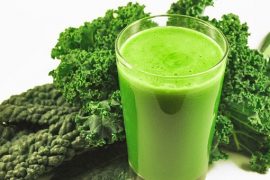One of the major lifestyle influences that we control to impact our risk of developing chronic disease is the food we consume. Countries with poor dietary habits have higher morbidity and mortality rates. These deaths are linked to the higher prevalence of stroke, diabetes, specific cancer types, heart disease, dental diseases and kidney failure amongst many more deteriorating health conditions (1).
Food provides biological information to all the cells and cellular DNA of our body. Focusing on an anti-inflammatory nutrition plan using nutrient dense foods from nature will help you improve your health and overcome chronic health conditions. This article will teach you the 5 benefits of a healing diet and how to put it into action. We also have a specific healing diet food plan PDF at the very bottom that you can download.
1) Reduces Inflammation:
Inflammation is a biological sign that the body is working to heal itself from destructive stimuli. The presence of an infection caused by a pathogenic invader such as a virus or bacterium can cause inflammation as well as a variety of stressors that create irritation. Chronic inflammation weakens the immune response and is a major factor that contributes to the development of pathological diseases like cancer, heart disease, Crohn’s disease and rheumatoid arthritis.
It is essential to reduce inflammation in the body to take back the power of healing. Anti-inflammatory foods are shown to effectively: (2, 3)
- Treat skin irritation
- Improve thyroid and adrenal function
- Regulate cholesterol and blood sugar
- Provide a thriving environment for beneficial gut bacteria
- Stimulate immunity to help the body defend against infection and disease
Many foods like ginger, turmeric and pumpkin seeds possess antioxidant properties to provide a powerful anti-inflammatory effect for healing.
2) Stabilizes Blood Sugar:
High blood sugar or hyperglycemia burdens the whole body by creating advanced glycolytic end products (AGEs) that damage tissues and organs and accelerate the aging process. Abnormal glucose (sugar) metabolism increases the risk for heart and kidney disease, chronic infections, poor circulation, stroke and blindness (4). Whether or not someone is diabetic, elevated blood sugar concentrations cause hormonal imbalances leading to weight gain and fatigue.
The American Diabetes Association estimates that 1.4 million Americans are annually diagnosed with diabetes (5). Improving the regulation of sugar levels in the body is essential to preventing inflammation. Doing so allows the insulin receptors of the cells to heal thus better regulates other hormones such as leptin and cortisol that are associated with weight gain, stress and illness.
3) Reduces Toxic Load:
Our exposure to environmental toxins such as chemicals and heavy metals reduces our natural ability to heal. The accumulation of toxins in tissues and organs causes autoimmune diseases including multiple sclerosis, neurological disorders like dementia and Alzheimer’s disease, and inhibit the body from functioning optimally by contributing to malnutrition and systemic inflammation. (6, 7)
A healing diet will reduce the toxins entering your system, thereby allowing your body to repair altered hormonal pathways that may be the originating cause for infertility, headaches and hypothyroidism. Eliminating toxins in food has been associated with the increased ability to heal brain alternations and reducing symptoms of autism, neurological disease and autoimmune disorders (8).
4) Provides Foundational Nutrients:
The modern diet today consists of staple foods that are highly processed and contain trans-fat, preservatives and are completely void of adequate nutrition. As many functional medical doctors agree, we are a society that is overfed and undernourished, showing signs of nutrient deficiencies.
A healing diet will help you overcome common deficiencies such as vitamin D and zinc that are vital to overall health and wellbeing. Increasing these and other nutrients in our diet inhibits systemic inflammation, improves gut function and cognitive health and strengthens our ability to repair cells and tissues. Additionally, the diet helps to reduce the impact of other stressors that can trigger the development of disease (9). (10)
5) Supports Healthy Blood pH:
The pH of healthy blood should be about 7.365 (slightly alkaline). The more acidic the diet we consume, the greater the risk for infection and disease to develop. Extra acidity in our system can cause kidney problems, bone mineral loss and promotes the development of many diseases including cancer by altering the pH of cells, fluids and organs in the body (11).
Maintaining an alkaline internal environment throughout your body results in major health benefits. By supporting a healthy pH, you can prevent against muscle atrophy, back pain, vitamin deficiencies, osteoporosis, hypertension and stroke to name only a few concerns (11).
This diet introduces alkalizing foods, which optimize blood and tissue pH levels to improve cellular processes. The diet also eliminates sugar, grains and conventional dairy products that promote acidity.
Steps to a Healing Diet
There are many versions of what a healing diet is all over the internet. I teach my clients a few foundational principles involved in this. The first step is to focus as much as possible on real foods. There are some processed foods that are using real foods that make life easier on a healing diet. This would include things like liquid stevia extract, monk fruit extract, Bulletproof bars and more.
In general though, there are 3 changes to the Standard American Diet (SAD) that we all need to make. These 3 changes are universal, no matter if you are trying to overcome cancer, an autoimmune disease, heal your gut or just want better overall daily performance.
1) Reduce Sugar and Grains:
Removing refined sugars and grains that increase blood glucose levels, upregulate inflammation and create extra acidity in our tissues is a key step in the healing diet.
Eliminate the following foods from your diet to reduce the glycemic load of refined sugar and grains that exhibit anti-nutrient activity:
- White pasta, bread, rice and pizza
- Pantry items including crackers, canned goods and cereals
- High glycemic loaded condiments and beverages like ketchup, mayonnaise and fruit drinks
- Deli meats and conventionally processed yogurts and cheeses
Instead, adding plenty of low sugar carbohydrates to your diet rich in a variety of fruits and veggies is the best way you can support your body’s healing abilities. Fresh produce contains powerful nutrients to help you rid of excess weight, improve your energy, fight mood swings and overcome sickness. Fruits and vegetables contain:
- Fiber and enzymes that aid in optimizing gut function and nutrient absorption,
- Antioxidants to upregulate detoxification pathways and heal tissue damage
- Key vitamins and minerals required for optimal cellular activity and brain health
2) Get Rid of Bad Fat and Add in More Good Fat:
The convenience of food in our diets today is not convenient for our health. Processed foods contain a higher content of artificial trans-fatty acids that create inflammation. These processed foods damage our digestive tract and hormones and cause serious issues in our body.
Many foods we eat today are ridden with hydrogenated soybean oil, corn and palm oils. These fats are low in omega-3 fats and contain toxic properties because of the way they are manufactured and used in food preparation (1). Additionally, we want to stay away from high amounts of polyunsaturated fats that are high in omega 6. This includes canola oil, peanut oil, safflower and cottonseed oils.
Medium-chain fats found in coconut oil and grass-fed butter are excellent fats to consume on a healing diet. These healthy fats are used as an efficient source of fuel for the body to combat inflammation and support brain function (15).
Some other great fat sources include avocados, olives and olive oil, pasture-raised animal products and wild-caught fish. A diet rich in these healthy fats is shown to increase the metabolism of fat and lipids and decrease fatty acid production which can: (14)
- Aid in weight loss
- Improve insulin sensitivity
- Reduce inflammation
- Support neurological health
3) Change the Meat that You Eat:
The Standard American Diet (SAD) not only consists of a greater abundance of nutrient-poor and calorie-dense foods and drinks from overly refined and processed goods, but is also characteristic of a higher quantity of poor meat choices.
Conventional animal products are fed genetically modified grains that are laden with pesticides, herbicides and other toxins. These animals are often given a lot of anti-biotics and other pharmaceuticals which make their way into their meat, eggs and dairy.
When animals are fed diets containing corn and soy products which they are not biologically programmed to eat when allowed to forage for their own diet, their bodies respond by breaking down quality fats. When compared to 100% grass-fed beef, grain-fed and grain-finished beef: (12, 13)
- Contains fewer essential omega-3 fatty acids and significantly less CLA (conjugated linoleic acid)
- Provides a smaller quantity of nutrients like vitamin E and A
- Is more contaminated with harmful pathogens like coli
There are many local farms in your area that provide pasture-raised animal products. You can also order them anywhere in the US from farms like US Wellness Meats and Slankers.
Eat These Healing Diet Foods
Here is a helpful shopping guide to assist you on your journey to follow a healing diet. We have hundreds of terrific recipes on our website and online programs that use specific elements of the healing diet to help people with various health conditions. You can truly let food by your medicine!!
Sources for this Article Include:
- Willett WC, Koplan JP, Nugent R, et al. Prevention of Chronic Disease by Means of Diet and Lifestyle Changes. In: Jamison DT, Breman JG, Measham AR, et al., editors. Disease Control Priorities in Developing Countries. 2nd edition. Washington (DC): The International Bank for Reconstruction and Development / The World Bank; 2006. Chapter 44. Link Here
- Jeena K, Liju VB, Kuttan R. Antioxidant, anti-inflammatory and antinociceptive activities of essential oil from ginger. Indian J Physiol Pharmacol. 2013 Jan-Mar; 57(1):51-62. PMID:24020099
- Panzhinskiy E, Hua Y, Lapchak PA, Topchiy E, Lehmann TE, Ren J, Nair S. Novel curcumin derivative CNB-001 mitigates obesity-associated insulin resistance. J Pharmacol Exp Ther. 2014 May;349(2):248-57. PMID: 24549372
- PubMed Health: Hyperglycemia Link Here
- American Diabetes Association: Statistics About Diabetes Link Here
- Schofield P. Dementia associated with toxic causes and autoimmune disease. Int Physchogeriatr. 2005; 17 Suppl 1: S129-47. PMID: 16240488
- Jamall IS, Davis B. Chemicals and environmentally caused diseases in developing countries. Infect Dis Clin North Am. 1991 Jun; 5(2): 365-75. PMID: 1869814
- Dietert RR, Dietert JM, Dewitt JC. Environmental risk factors for autism.Emerging Health Threats Journal. 2011; 4:10. PMCID: 3168222
- Lee D, Hwang W, Artan M, Jeong D-E, Lee S-J. Effects of nutritional components on aging.Aging Cell. 2015; 14(1):8-16. PMCID: 4326908
- Vela G, Stark P, Socha M, Sauer AK, Hagmeyer S, Grabrucker AM. Zinc in Gut-Brain Interaction in Autism and Neurological Disorders.Neural Plasticity. 2015; 2015:972791. PMCID: 4386645
- Schwalfenberg GK. The Alkaline Diet: Is There Evidence That an Alkaline pH Diet Benefits Health?Journal of Environmental and Public Health. 2012; 2012:727630. PMCID: 3195546
- Daley CA, Abbott A, Doyle PS, Nader GA, Larson S. A review of fatty acid profiles and antioxidant content in grass-fed and grain-fed beef.Nutrition Journal. 2010; 9:10. PMCID: 2846864
- Van Elswyk ME, McNeill SH. Impact of grass/forage feeding versus grain finishing on beef nutrients and sensory quality: the U.S. experience. Meat Sci. 2014 Jan; 96(1):535-40. PMID:24018274
- Paoli A, Rubini A, Volek JS, Grimaldi KA. Beyond weight loss: a review of the therapeutic uses of very-low-carbohydrate (ketogenic) diets.European Journal of Clinical Nutrition. 2013; 67(8):789-796. PMCID: 3826507
- Page KA, Williamson A, Yu N, et al. Medium-Chain Fatty Acids Improve Cognitive Function in Intensively Treated Type 1 Diabetic Patients and Support In Vitro Synaptic Transmission During Acute Hypoglycemia. Diabetes. 2009; 58(5). PMCID: 2671041
About the author:

Dr. David Jockers is a Maximized Living doctor, functional nutritionist, corrective care chiropractor, exercise physiologist, and certified strength and conditioning specialist. His mission is to inspire and empower as many people as possible to reach their full health potential.
He currently owns and operates Exodus Health Center in Kennesaw, Georgia. He is also the author of the best-selling book “SuperCharge Your Brain” the complete guide to radically improve your mood, memory and mindset.
This article is shared with permission from our friends at Dr. Jockers’ .

















